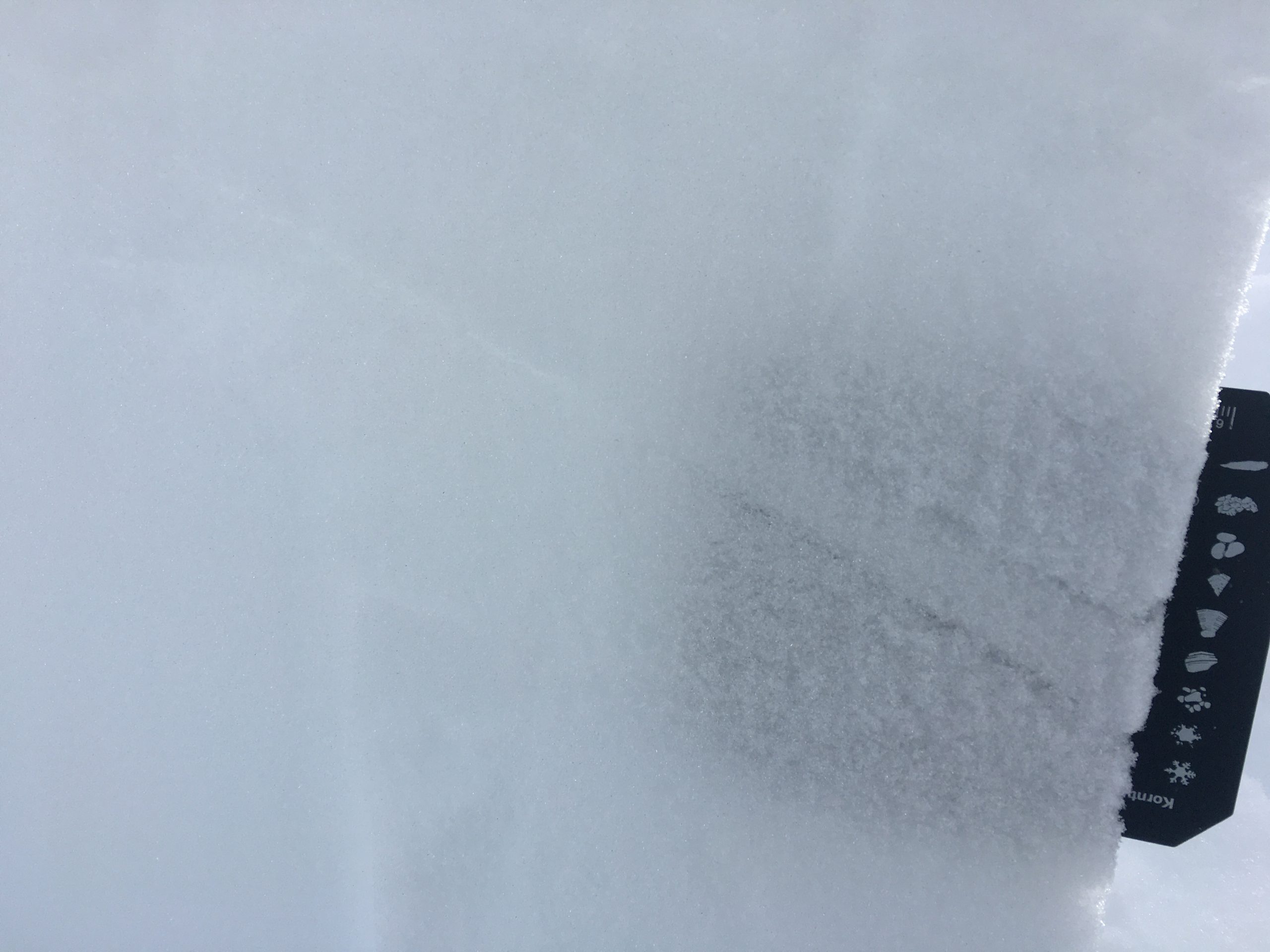Turnagain Pass
|
|
A MODERATE avalanche danger remains at all elevations. An increase in east winds forecast today should blow a few inches of new snow and any old soft snow into small shallow wind slabs. These will be possible to trigger on any slope with new wind deposited snow. In areas out of the winds at all elevations, triggering a slab avalanche 1-2′ deep is possible due to buried weak layers.
PORTAGE/PLACER VALLEYS: Small natural wind slab avalanches and cornice falls will be possible, as this is where most the new snow is falling.

 Andrew found this layer of buried surface hoar (the thin gray line) on Magnum two days ago. It sat just over a foot below the surface. 2.22.21.
Andrew found this layer of buried surface hoar (the thin gray line) on Magnum two days ago. It sat just over a foot below the surface. 2.22.21.